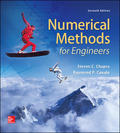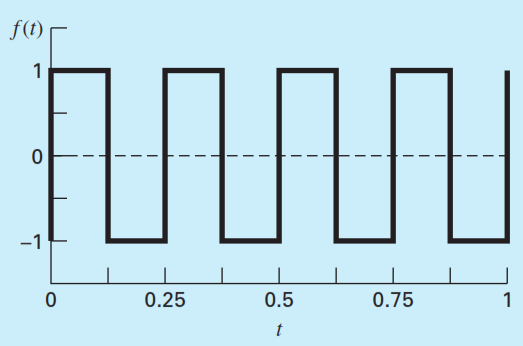
In electric circuits, it is common to see current behavior in the form of a square ware as shown in Fig. P19.22. Solving for the Fourier series from
we get the Fourier series
Let

FIGURE P19.22
Want to see the full answer?
Check out a sample textbook solution
Chapter 19 Solutions
EBK NUMERICAL METHODS FOR ENGINEERS
- Q/Solve the heat equation initial-boundary-value problem:- ut = ux X u (x90) = X ux (ost) = ux (39) = 0arrow_forwardA graph G of order 12 has vertex set V(G) = {c1, c2, …, c12} for the twelve configurations inFigure 1.4. A “move” on this checkerboard corresponds to moving a single coin to anunoccupied square, where(1) the gold coin can only be moved horizontally or diagonally,(2) the silver coin can only be moved vertically or diagonally.Two vertices ci and cj (i ≠ j) are adjacent if it is possible to move ci to cj by a single move. (a) What vertices are adjacent to c1 in G?(c) Draw the subgraph of G induced by {c2, c6, c9, c11}.arrow_forwardi) Consider the set S = {−6, −3, 0, 3, 6}. Draw a graph G whose set of verti- ces be S and such that for i, j ∈ S, ij ∈ E(G) if ij are related to a rule that t'u you choose to apply to i and j. (ii) A graph G of order 12 has as a set of vertices c1, c2, . . . , c12 for the do- ce configurations of figure 1. A movement on said board corresponds to moving a coin to an unoccupied square using the following two rules: 1. the gold coin can move only horizontally or diagonally, 2. the silver coin can move only vertically or diagonally. Two vertices ci, cj, i̸ = j are adjacent if it is possible to move ci to cj in a single movement. a) What vertices are adjacent to c1 in G? b) Draw the subgraph induced by {c2, c6, c9, c11}arrow_forward
- Prove for any graph G, δ(G) ≤ d(G) ≤ ∆(G) using the definition of average degree, make a formal proofarrow_forwardRestart box ixl.com/math/grade-6/area-of-compound-figures-with-triangles ass BModules Dashboard | Khan... Grades 6-8 Life S... t Typing Lessons BDashboard f IXL My IXL Learning Assessm Sixth grade >GG.12 Area of compound figures with triangles 5V2 What is the area of this figure? 4 km 2 km 5 km 4 km 2 km Learn with an example 13 km Write your answer using decimals, if necessary. square kilometers Submit Area of compound figures Area of triangles (74) Work it out Not feeling ready yet? Thesarrow_forwardNot use ai pleasearrow_forward
- Determine the volume and the surface area of the shape obtained by rotating the area of the figure about the x-axis and the y-axis.arrow_forwardI'm getting only chatgpt answer that are wrong Plz don't use chatgpt answer will upvote .arrow_forwardFind xyz cordinates of center of gravity given z = 3.47 inarrow_forward
 Trigonometry (MindTap Course List)TrigonometryISBN:9781337278461Author:Ron LarsonPublisher:Cengage LearningAlgebra & Trigonometry with Analytic GeometryAlgebraISBN:9781133382119Author:SwokowskiPublisher:Cengage
Trigonometry (MindTap Course List)TrigonometryISBN:9781337278461Author:Ron LarsonPublisher:Cengage LearningAlgebra & Trigonometry with Analytic GeometryAlgebraISBN:9781133382119Author:SwokowskiPublisher:Cengage

